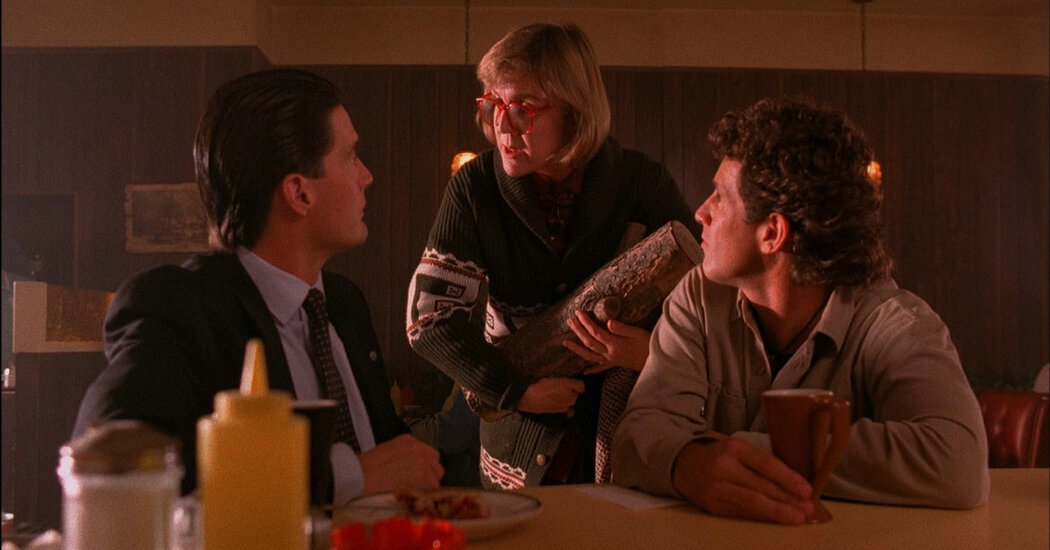Is “Twin Peaks” the most American TV series ever made? It is, maybe, not the first series that a nation would happily choose as its calling card: a murder mystery, surreal and haunted, that involves the sacrifice of the innocent against a backdrop of mountain majesties and small-town diners. In it, David Lynch, who died at age 78, jimmied up the floorboards of the American dream and loosed a swarm of evil spirits from beneath.
But “Twin Peaks,” which Lynch made with Mark Frost, is chock-full of America, as wonder-struck by its physicality as any sweeping western epic or Georgia O’Keeffe painting. From its opening credits, which intercut misty forests and the sparks of logging machinery, it sees a place of beauty and violence, crowded with animistic spirits that predate political borders and even human settlement.
It is also a show that was made out of Americana, coffee and cherry pie, yearbook photos and doo-wop ballads. Lynch, who spent some of his childhood in the northwest, is often described as a filmmaker who showed the rot behind picture-perfect American facades, and this is not wrong. (In the film “Twin Peaks: Fire Walk With Me,” he even represented his concept “garmonbozia,” or worldly pain and sorrow, in the form of that most midcentury-American of side dishes, creamed corn.)
But there is nothing cynical or snide about his portraiture in “Twin Peaks.” It is full of darkness but absent of contempt. Like the dictated observations of the F.B.I. special agent Dale Cooper (Kyle MacLachlan), it is the work of an earnest odd bird driven to dig deeper — underneath the grass, into the woods, even beyond the bounds of the earthly plane — to get at the horror and transcendence of being human.
This, to put it mildly, made “Twin Peaks” a stunning thing to see on weeknight prime-time TV when it premiered on ABC in 1990. It was even more stunning to see it become not just a hit but also a monster pop-culture sensation — this from the art-house director who had released the phantasmagoric “Blue Velvet” a few years before.
But “Twin Peaks” was not a lofty work of film lowering itself to a lesser medium. It was unashamedly commercial TV, combining elements of high-school drama, police procedural and soap opera. (Not to mention the soap-within-a-show, “Invitation to Love.”) Yes, there were inexplicable interludes in the Black Lodge, a cryptically speaking giant and the wild-eyed murderous spirit Bob — but first, there was a popcorn-entertainment whodunit with a tagline: “Who killed Laura Palmer?”
Thank you for your patience while we verify access. If you are in Reader mode please exit and log into your Times account, or subscribe for all of The Times.
Thank you for your patience while we verify access.
Already a subscriber? Log in.
Want all of The Times? Subscribe.


